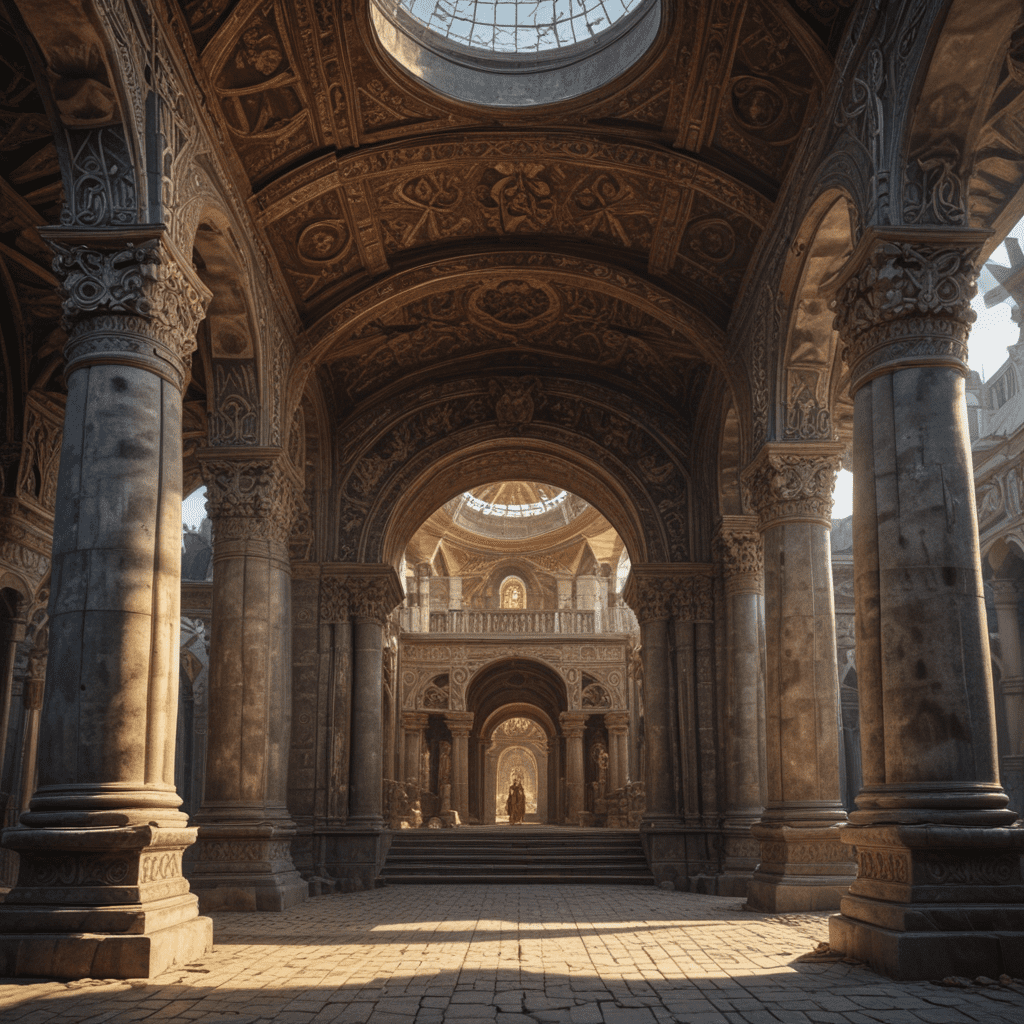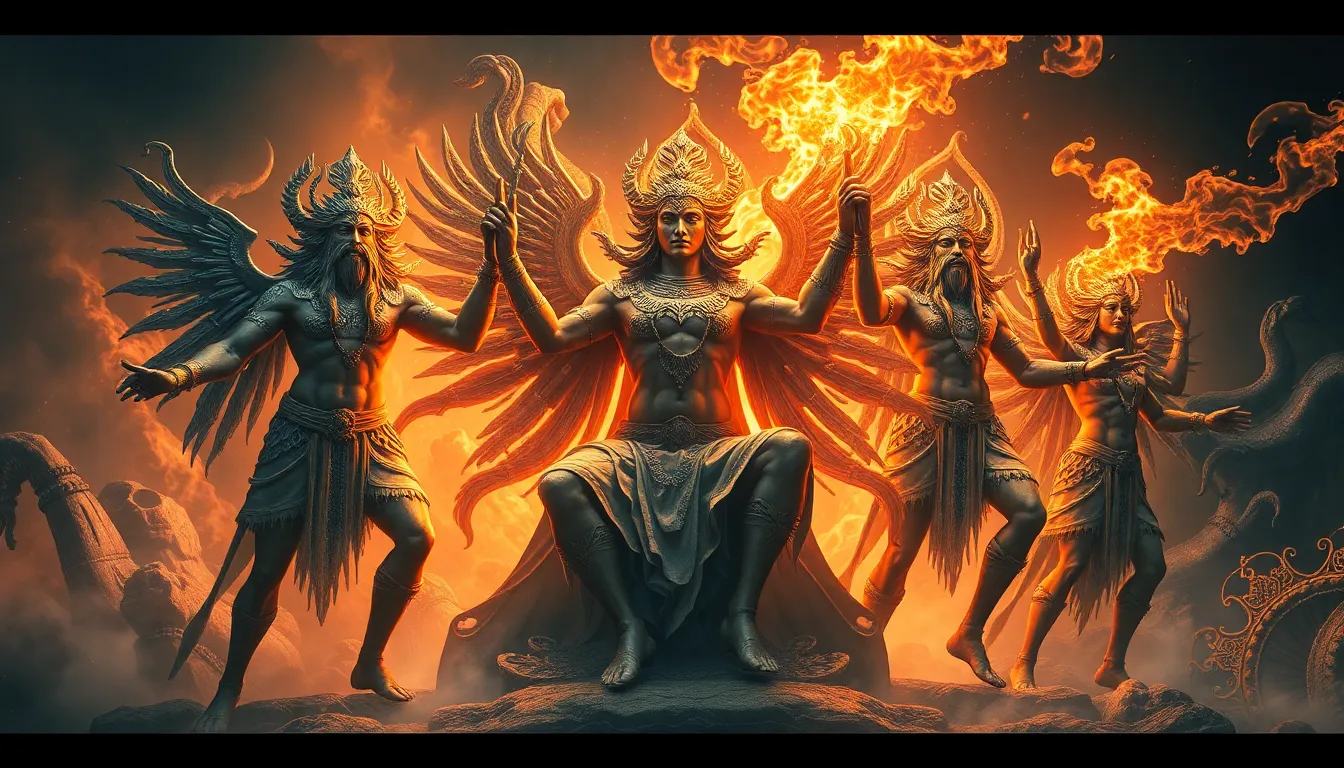The Influence of Slavic Mythology on Architecture and Design
I. Introduction
Slavic mythology, a rich and diverse tradition, has deeply influenced the architecture and design of Slavic cultures for centuries. Slavic architectural traditions are imbued with mythological symbolism, nature worship, and ancient rituals, creating a unique and captivating aesthetic. This article explores the profound impact of Slavic mythology on the built environment, from sacred temples to vernacular dwellings.
II. The Significance of Slavic Mythology
Slavic mythology, passed down through generations of oral storytelling, holds a sacred place in Slavic culture. Its tales of gods, goddesses, spirits, and ancestors have shaped beliefs, customs, and artistic traditions. Slavic mythology is an integral part of the Slavic identity, providing a framework for understanding the world and one's place within it.
III. Slavic Architecture and Design Traditions
Slavic architecture and design traditions have evolved over millennia, influenced by a myriad of factors. Slavic tribes, each with its distinct customs and beliefs, constructed diverse structures that reflected their mythological worldview. Common elements include intricate wood carvings, elaborate rooflines, and decorative motifs inspired by nature.
VI. The Role of Rituals and Ceremonies
Slavic rituals and ceremonies played a significant role in the design of sacred structures. Temples, shrines, and other sacred spaces were carefully designed to align with mythological beliefs and practices. The placement of altars, the orientation of buildings, and even the choice of building materials were influenced by rituals and ceremonies.
VII. Sacred Geometry and Patterns
Slavic mythology is replete with sacred geometric patterns and symbols. These patterns, believed to possess mystical powers, were incorporated into architectural designs. They can be found in the layout of temples, the ornamentation of buildings, and the woven designs of textiles. These patterns served as protective symbols and were believed to bring harmony and balance to the living space.
VIII. The Influence on Folk Art
The influence of Slavic mythology extends beyond architecture into the realm of folk art. Traditional Slavic crafts, such as wood carving, pottery, and embroidery, are rich with mythological motifs. These motifs depict gods, goddesses, spirits, and legendary creatures, reflecting the deep connection between Slavic mythology and everyday life.
IX. Contemporary Revival and Interpretation
In recent decades, there has been a resurgence of interest in Slavic mythology, leading to a revival of traditional architectural and design elements. Contemporary architects and designers draw inspiration from Slavic mythology to create innovative structures and spaces that blend tradition with modernity. This revival reflects a renewed appreciation for the cultural heritage of Slavic peoples.
X. Conclusion
Slavic mythology has profoundly influenced the architecture and design of Slavic cultures. From ancient temples to contemporary buildings, mythological symbolism, nature worship, rituals, and sacred geometry have shaped the built environment. This rich tradition continues to inspire and inform the work of architects and designers, contributing to a unique and vibrant architectural heritage.
FAQ
Q: What is the significance of славя mythology in Slavic culture?
A: Slavic mythology holds a sacred place in Slavic culture, providing a framework for understanding the world and one's place within it.
Q: How did Slavic mythology influence architecture?
A: Slavic mythology influenced architecture through the incorporation of mythological symbolism, nature worship, rituals, and sacred geometry into the design of buildings.
Q: What are some examples of Slavic architectural traditions?
A: Slavic architectural traditions include intricate wood carvings, elaborate rooflines, and decorative motifs inspired by nature.
Q: How is Slavic mythology reflected in contemporary architecture?
A: Contemporary architects and designers are drawing inspiration from Slavic mythology to create innovative structures and spaces that blend tradition with modernity.



